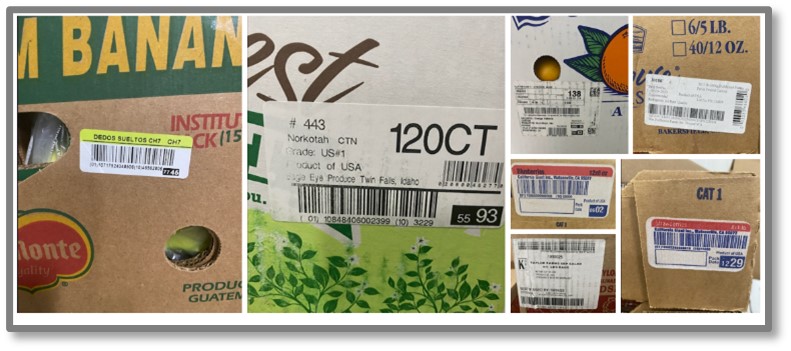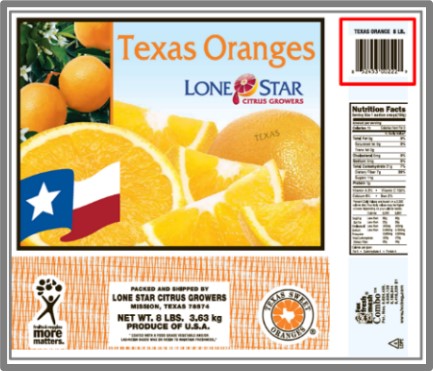Building a Sustainable Supply Chain Technology for Local Farm to School Products
Introduction
The USDA is committed to the development of a sustainable, scalable Farm to School (FTS) infrastructure, and has invested tens of millions of dollars to the effort but continue to see multiple challenges.
Cindy Long, administrator of the U.S. Department of Agriculture’s Food Nutrition Service, noted in a recent interview published by Harvest Public Media “We often hear that schools and producers initially don’t talk the same language…Schools think about ‘Oh, I need 7,500 servings of this.’ And farmers think in terms of bushels or crates.” NPR Article – Harvest Public Media
Sustainability through Transformation
While the identified objectives of Farm to School are appealing, there are some sizeable gaps in expectations between buyers and sellers that must be addressed. It takes a well-coordinated collaborative effort by the designated Lead Agency to reach across multiple stakeholders to achieve innovation in a sustainable way, while mitigating known risks and disconnects. Long said there are other big challenges her agency has had to tackle, citing “a lack of [cafeteria] staff capacity to engage in activities and then having to work within a fairly structured procurement system in terms of buying food for their school.”
“But there’s a catch with this wealth of federal support: the firehose of extra funding runs out at the end of this school year, which means all of these new systems being stood up now need to be self-sustaining when the well runs dry. For her part, Udelhofen (food services director for the Clear Lake School District in norther Iowa) isn’t sure whether her local food service can outlive the temporary funding, but she’ll keep it going as long as she’s able. ““As long as my budget looks good and I can support it,” she said, “I’m going to get that food in front of the kids.”” NPR Article – Harvest Public Media
To define the role of technology in sustainable efforts, inTEAM has met with stakeholder representatives in various settings. This includes grant makers, farmer/producers, trade associations, school districts, cooperative purchasing groups, specialty distributors, food hubs, and representatives from State Departments of Education and State Departments of Agriculture.
The Global Data Synchronization Network
The Global Data Synchronization Network® (GDSN®) is a platform that leverages standards, protocols, and best practices used for decades to maximize efficiencies by providing a common language across all supply chain stakeholders. Although not widely recognized, key elements of GDSN ( unique barcode identifiers on all types of packaging) are already in wide use by farm to school producers. This web page is intended to provide helpful information regarding GDSN-based technology software in Child Nutrition Programs in general and FTS in particular.
GDSN was developed in 1974 to track products through retail channels using scannable barcodes (commonly known as Universal Product Codes, or UPCs, and officially as Global Trade Item Numbers, or GTINs) and has now spread to nearly every industry worldwide as a standard way to communication product information. GS1 is the international non-profit organization that manages the GDSN data standards, and in 2018, they updated those standards to include attributes critical to K-12 Child Nutrition. In 2021, USDA adopted GDSN as the data standard for its direct delivery USDA Foods program. Refer to GTINs in K12 – USDA Guidance for more information.

GDSN, GAP, & Farm to School
Small farms and processors are already part of the GDSN ecosystem when they assign UPCs to their products as one of the requirements of the national standards for Good Agricultural Practices (GAP) and Good Handling Practices (GHP). GS1 has a comprehensive program for managing these practices. Fresh Foods: Enabling supply chain visibility for improved traceability and food safety is a good resource for a deeper dive on this topic (GS1 Fresh Foods Standards).
According to the USDA Good Agricultural Practices and Good Handling Practices Audit Verification Program, “The food safety program shall include a documented traceability program. A traceability program in its simplest form is the ability to know where product was received from (one step back) and where product was sent to (one step forward).” USDA recommends GAP certification for school produce purchases and UPCs/GTINs with their machine-readable barcodes is the de-facto method to comply.
These UPC barcodes are put on the labels of each case delivered to SFAs and uniquely identify the product and pack size. When this barcode is scanned by SFA’s that are connected to GDSN, they will receive the rest of the product information available in GDSN such as nutrients, allergens, meal pattern credits, and point of origin. A product’s “local” status can be identified for each SFA depending on their state agency’s specific rules. Farmers and distributors participating in the FTS program gain broader visibility to SFAs through GDSN technology and can automatically show which of their products are local to each specific SFA. Additionally, these farmers can also gain access to standardized product specifications for their products collated by USDA and accessible through these GDSN-based solutions, making it easier to produce accurate specifications for use by K-12 menu planners.

The GDSN framework communicates general product information to other stakeholders and does not contain pricing or other information that is specific to any individual distributor or customer. However, distributors who work with a GDSN-based solution can use that solution to maintain their standardized catalogs containing UPCs provided by their suppliers, then add pricing and other information to make it specific to an individual SFA or purchasing cooperative. SFAs can then access that GDSN-based solution to view catalogs and pricing and easily integrate that information with their existing operations.
GDSN & Supply Chain Management
Data from multiple disparate sources can be aggregated and easily searchable in a GDSN-based solution and contain complete specifications including product description, pack size, net weight, nutrients, allergens, and point of origin. It can also include specific attributes required by K-12 child nutrition programs such as meal pattern credits, CN labels, product formulation statements, and vegetable subgroups as populated by the farm/processor. This allows multiple supply chain stakeholders to use GDSN to create a digital audit trail at each step, creating logistical efficiencies and traceability.

GDSN Connect enables electronic transactions to flow in parallel with the physical journey of each product:
- Farmers and food hubs and distributors under long term contracts develop an annual plan for seasonal availability of local foods
- On line catalogs are updated weekly by distributors with availability and pricing data. When a farmer or processor fulfills an order, they add the UPC barcode label to each package.
- In some cases, local seasonal products are consolidated at food hubs and/or distributors where barcodes are scanned on arrival and departure at each facility.
- K-12 operators scan or record delivery and adds items to inventory in their local BOH software.
- School kitchens can use production records in local BOH software to pull inventory and to subtract items used from inventory.
- The product or ingredient is served to students.
- In the event of a food service recall electronic transaction records pinpoint the location of foods to be isolated and returned.
GDSN, SFAs, and Local “Back of the House” Software Connections
SFAs are required to use specialized “back of the house” (BOH) software applications to help them track and meet their accountability standards imposed upon them by USDA and their state agencies. While some of the BOH solutions integrate with some larger distributors for ordering purposes, those integrations often lack the product information. There are GDSN-based solutions already in place that allow SFAs to integrate their BOH software applications with GDSN to receive these standardized product specifications electronically and automatically.

These systems enable SFAs to think in terms of menu servings and then translate those servings into bushels or pack sizes which are used by their distributors. The challenge has been in accurately maintaining that relationship between the serving size used on a menu and how many servings are in each case. With GDSN-based solutions, these relationships can be automatically entered and updated, increasing the accuracy and effectiveness of forecasting, inventory, and purchasing.
Engaging Farm to School Suppliers in an Online Marketplace
GDSN-based solutions can provide farmers and distributors with an easy method to communicate product specifications and catalog information to SFAs in a way that they can easily use in their systems. Distributors and farmers setup and post their catalogs online within a GDSN-based solution and enter the UPC codes, which automatically links those products with the specifications from GDSN, and then setup contracts with specific pricing information for each customer. The SFAs would then see those catalogs with their specific pricing and be able to download the full product specifications from GDSN to their local BOH software system. SFAs would also be able to see a list of suppliers local to them through GDSN-based solutions like this, helping these small farmers pursue new sales opportunities within K-12.
Engaging small farmers with GDSN is an important priority for many stakeholders, 1WorldSync, one of the GDSN “data pool” providers, who are developing special programs to help small businesses access GDSN and publish their product information at a minimal cost, or even no cost under grant awards.
Summary
The Global Data Synchronization Network is a platform that enables standardization and streamlined communication of product specifications across the supply chain. GDSN-based solutions are platforms that can provide small farmers and distributors with easy access to K-12 customers and provide these customers with the unique data that they need.
The GDSN framework assures reliability and scalability to transform early-stage farm to school programs through integration with the mainstream supply chain. It empowers local farmers and suppliers with greater access to the SFA community and enables SFAs to find these local suppliers, maintain the required audit trail for grant reimbursement, and streamline their own internal operations. Bringing the power of GDSN into K-12 makes it as easy for SFAs to lower costs, reduce redundancies and streamline the administrative processes used to procure from their local suppliers as it is to procure from the national suppliers.
Contact us to learn more about how GDSN-based technology platforms can be a part of a regional Farm to School proposal. Learn more about grant opportunities, visit Find Funding.
